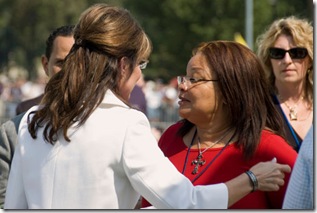 A patent filed by Microsoft reveals the company has voluntarily created software that provides the Government and other agencies seeking to spy on you with the ability to easily intercept, re-route and record all forms of personal digital communications, including Skype calls which are directly named in the patent.
A patent filed by Microsoft reveals the company has voluntarily created software that provides the Government and other agencies seeking to spy on you with the ability to easily intercept, re-route and record all forms of personal digital communications, including Skype calls which are directly named in the patent.
A patent filed by Microsoft seeks to give the company exclusive rights to intercept personal electronic communications and resend them directly to the Government and other agencies who may be seeking to spy on you.
By filing the patent, Microsoft clearly shows they have voluntarily created the software, instead of waiting for a Government mandate to do so. The patent states that “the government or one of its agencies may need to monitor communications” and software acts as a “recording agent” that is able to silently record the communication”.
The patent specifically names certain types of communications, such as Skype calls, instant messaging, video conferencing software, and even meeting software but does not stop there. Instead it goes on to label just about all electronic devices you can think of as a computer and requests for a patent to be able to intercept digital communications from those devices, and even access data stored in a variety of other storage mediums, and forward the to the Government.
A Gizmodo article on the patent points out that Microsoft appears to trying to patent Skype spying, which is specifically named within the patent, but the scope of patent goes far beyond the ability to just spy on Skype calls.
Only by digging into the patent can you see the deceptiveness in Microsoft’s the labeling of certain technologies and realize the true scope of what the software company is trying to provide the Government easy access to spy on.
For example, the label all packet-based communication as VoIP, which clearly nothing is further from the truth. All data that can be sent over the internet is a “packet-based communication”.
[...] the term VoIP is used to refer to standard VoIP as well as any other form of packet-based communication that may be used to transmit audio over a wireless and/or wired network. For example, VoIP may include audio messages transmitted via gaming systems, instant messaging protocols that transmit audio, Skype and Skype-like applications, meeting software, video conferencing software, and the like.
The patent goes on and deceptively labels all digital electronic devices as computers, say that everything from computers, to printers, gaming devices, automobile systems, even printers, home appliances and all other mobile based electronics are computers. The patent even applies to microcontroller which are often the brain of electronic devices and used in products ranging from automobile engine control systems, implantable medical devices, remote controls, office machines, appliances, power tools, and even toys.
A computer may include any electronic device that is capable of executing an instruction[...]
Examples of well known computing systems, environments, or configurations that may be suitable for use [include] personal computers, server computers, hand-held or laptop devices, multiprocessor systems, microcontroller-based systems, set-top boxes, programmable consumer electronics, network PCs, minicomputers, mainframe computers, personal digital assistants (PDAs), smartphones, gaming devices, printers, appliances including set-top, media center, or other appliances, automobile-embedded or attached computing devices, other mobile devices, distributed computing environments that include any of the above systems or devices, and the like.
The patent also doesn’t stop with computers or even communications for that matter. It targets a variety of offline mediums that can used to store data and even computer programs themselves.
[...] a variety of computer-readable media [including] any available media that can be accessed by the computer removable and non-removable media implemented in any method or technology for storage of information such as computer-readable instructions, data structures, program modules, or other data.
Computer storage media includes RAM, ROM, EEPROM, flash memory or other memory technology, CD-ROM, digital versatile discs (DVDs) or other optical disk storage, magnetic cassettes, magnetic tape, magnetic disk storage or other magnetic storage devices, or any other medium which can be used to store the desired information and which can be accessed by the computer.
The patent further reveals that the software’s capability includes the ability to intercept all digital communications regardless of the medium, or whether they are online or offline, bluntly including the ability to intercept all modulated data signals.
Communication media typically embodies computer-readable instructions, data structures, program modules, or other data in a modulated data signal such as a carrier wave or other transport mechanism and includes any information delivery media. The term “modulated data signal” means a signal that has one or more of its characteristics set or changed in such a manner as to encode information in the signal. By way of example, and not limitation, communication media includes wired media such as a wired network or direct-wired connection, and wireless media such as acoustic, RF, infrared and other wireless media. Combinations of any of the above should also be included within the scope of computer-readable media.
Quoted directly from US patent application 20110153809:
June 23, 2011- Assignee: Microsoft Corporation
Legal Intercept
Aspects of the subject matter described herein relate to silently recording communications. In aspects, data associated with a request to establish a communication is modified to cause the communication to be established via a path that includes a recording agent. Modification may include, for example, adding, changing, and/or deleting data within the data. The data as modified is then passed to a protocol entity that uses the data to establish a communication session. Because of the way in which the data has been modified, the protocol entity selects a path that includes the recording agent. The recording agent is then able to silently record the communication.
Claims
1. A method implemented at least in part by a computer, the method comprising: receiving data regarding establishing a communication session between at least two entities via a switched packet network for a communication that includes audio; locating one or more parameters in the data that indicate one or more local candidate communication points of at least one of the at least two entities; removing the one or more parameters from the data to cause the communication session to be established over a path that includes a recording agent that is capable of silently copying the communication between the at least two entities; and providing the data with the parameters removed to a protocol entity that uses the data to follow a communication protocol to establish the communication session via the path, the protocol entity potentially including one or more of the at least two entities and/or any entity that interacts with one or more of the at least two entities.
2. The method of claim 1, wherein receiving data regarding establishing a communication session between at least two entities comprises receiving the data from a call server that is involved in establishing the communication session, the call server responsible at least for relaying invite requests from a requesting one of the entities to a receiving one of the entities, the call server configurable to provide the data to a recording agent before establishing the communication session.
[...]20. The apparatus of claim 19, further comprising a recorder manager operable to configure a recording agent to silently copy communication transmitted via the communication session.
Description
BACKGROUND
[0001] Plain old telephone service (POTS) allows people from all over the world to talk to each other through the use of telephones. POTS has been around since the late 19th century and has remained basically the same. In traditional usage, POTS has transmitted voice communications using electrical signals that are transmitted via pairs of wires. Central offices establish connections between callers and those called.
[0002] Sometimes, a government or one of its agencies may need to monitor communications between telephone users. To do this with POTS, after obtaining the appropriate legal permission, a recording device may be placed at a central office associated with a selected telephone number. Electrical signals corresponding to sound to and from the telephones at the selected telephone number may be monitored and transformed into sound. This sound may then be recorded by the recording device without the telephone users being aware of the recording. With new Voice over Internet Protocol (VoIP) and other communication technology, the POTS model for recording communications does not work.
[...]
SUMMARY[0004] Briefly, aspects of the subject matter described herein relate to silently recording communications. In aspects, data associated with a request to establish a communication is modified to cause the communication to be established via a path that includes a recording agent. Modification may include, for example, adding, changing, and/or deleting data within the data. The data as modified is then passed to a protocol entity that uses the data to establish.
Exemplary Operating Environment
[...]
[0015] Aspects of the subject matter described herein are operational with numerous other general purpose or special purpose computing system environments or configurations. Examples of well known computing systems, environments, or configurations that may be suitable for use with aspects of the subject matter described herein comprise personal computers, server computers, hand-held or laptop devices, multiprocessor systems, microcontroller-based systems, set-top boxes, programmable consumer electronics, network PCs, minicomputers, mainframe computers, personal digital assistants (PDAs), smartphones, gaming devices, printers, appliances including set-top, media center, or other appliances, automobile-embedded or attached computing devices, other mobile devices, distributed computing environments that include any of the above systems or devices, and the like.
[0016] Aspects of the subject matter described herein may be described in the general context of computer-executable instructions, such as program modules, being executed by a computer. Generally, program modules include routines, programs, objects, components, data structures, and so forth, which perform particular tasks or implement particular abstract data types. Aspects of the subject matter described herein may also be practiced in distributed computing environments where tasks are performed by remote processing devices that are linked through a communications network. In a distributed computing environment, program modules may be located in both local and remote computer storage media including memory storage devices.
[0017] With reference to FIG. 1, an exemplary system for implementing aspects of the subject matter described herein includes a general-purpose computing device in the form of a computer 110. A computer may include any electronic device that is capable of executing an instruction. Components of the computer 110 may include a processing unit 120, a system memory 130, and a system bus 121 that couples various system components including the system memory to the processing unit 120. The system bus 121 may be any of several types of bus structures including a memory bus or memory controller, a peripheral bus, and a local bus using any of a variety of bus architectures. By way of example, and not limitation, such architectures include Industry Standard Architecture (ISA) bus, Micro Channel Architecture (MCA) bus, Enhanced ISA (EISA) bus, Video Electronics Standards Association (VESA) local bus, Peripheral Component Interconnect (PCI) bus also known as Mezzanine bus, Peripheral Component Interconnect Extended (PCI-X) bus, Advanced Graphics Port (AGP), and PCI express (PCIe).
[0018] The computer 110 typically includes a variety of computer-readable media. Computer-readable media can be any available media that can be accessed by the computer 110 and includes both volatile and nonvolatile media, and removable and non-removable media. By way of example, and not limitation, computer-readable media may comprise computer storage media and communication media.
[0019] Computer storage media includes both volatile and nonvolatile, removable and non-removable media implemented in any method or technology for storage of information such as computer-readable instructions, data structures, program modules, or other data. Computer storage media includes RAM, ROM, EEPROM, flash memory or other memory technology, CD-ROM, digital versatile discs (DVDs) or other optical disk storage, magnetic cassettes, magnetic tape, magnetic disk storage or other magnetic storage devices, or any other medium which can be used to store the desired information and which can be accessed by the computer 110.
[0020] Communication media typically embodies computer-readable instructions, data structures, program modules, or other data in a modulated data signal such as a carrier wave or other transport mechanism and includes any information delivery media. The term “modulated data signal” means a signal that has one or more of its characteristics set or changed in such a manner as to encode information in the signal. By way of example, and not limitation, communication media includes wired media such as a wired network or direct-wired connection, and wireless media such as acoustic, RF, infrared and other wireless media. Combinations of any of the above should also be included within the scope of computer-readable media.
[...]
Legal Intercept
[0028] As mentioned previously, traditional techniques for silently recording telephone communication may not work correctly with VoIP and other network-based communication technology. As used hereafter, the term VoIP is used to refer to standard VoIP as well as any other form of packet-based communication that may be used to transmit audio over a wireless and/or wired network. For example, VoIP may include audio messages transmitted via gaming systems, instant messaging protocols that transmit audio, Skype and Skype-like applications, meeting software, video conferencing software, and the like.
[...]
Source: US Patent Office - Posted at AlexanderHiggins.com
Is anyone surprised out there?? Bill Gates… Mr. Bilderberg depopulation guy himself wants to help the government spy on you??




















No comments:
Post a Comment